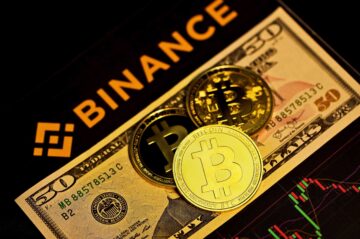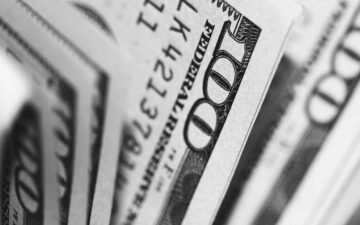The analysts believe that catalysts over the next year trump the crypto regulatory uncertainty, including recent deferrals of spot bitcoin ETFs, and interest rate worries that have unsettled investors.

Most major cryptos rose but then retreated on Wednesday.
Photo on Unsplash
Posted September 27, 2023 at 6:57 pm EST.
After surging early Wednesday in an apparent short squeeze by bearish investors covering their downside, bitcoin retreated to the more familiar levels of recent days nearer $26,000.
The largest cryptocurrency by market capitalization was recently trading near $26,300, up 0.5% over the past 24 hours. BTC had above $26,700 at one point before the rally petered out as markets resumed their nervous scrutiny of stubbornly high prices and central bank hawkishness that has at least partly hamstrung growth.
On Wednesday, a surprisingly strong but not overwhelming U.S. durable goods report and rising oil prices (Brent crude reached its highest level of 2023) offered support for an additional Federal Reserve rate hike – anathema to observers already accusing the bank of increasing the likelihood of recession. Bitcoin seems fated to remain near the $26,000 threshold for the time being.
Yet Mark Connors, head of research at Canadian digital asset manager 3iQ, wrote that this week’s swirl of unsettling macro and crypto-specific events, including the SEC deferral of the Ark 21 and Global X applications for spot bitcoin exchange traded funds (ETFs) and testimony by SEC Chair Gary Gensler, who reiterated his past concerns about digital assets to the House Committee on Financial Services, were “temporary” impediments. Connors believes that cryptos’ longer-term signals point upwards.
“The combination of low (trading) volumes and high percentage of determined ‘hodlers’, will foster such temporary dislocations,” wrote of Wednesday’s short squeeze in a note to CoinDesk.
Connors wrote that bitcoin’s 0.5% rise in September had outperformed the tech-heavy Nasdaq, which has dropped more than 6%, driving the 21-day correlation between the assets to single digits. “Like in March, when banks failed and markets swooned, BTC is outperforming,” Connors wrote, noting that despite its recent sluggishness and historic hikes in Treasury yields, (The 10-year rate currently hovers around 16-year highs), BTC remains up almost 60% in 2023.
He added that recent token initiatives by financial services giants Citi and Deutsche Bank suggested that cryptos were reaching a potentially transitional phase in their history that could lead to wider acceptance.
“BTC and ETH Blockchains are the most cost effective options, so the ‘test-chains’ running in beta by these firms will eventually (IMO), adopt and leverage the full functionality of the Bitcoin and Ethereum chains,” Connors wrote.
Altcoins Rise and Fall
Ether also jumped early before resettling to trade at about $1,595, a 0.4% gain and close to its levels for much of the past few days. Other cryptos were slightly more green than red, although Bitcoin Cash (BCH) was recently up more than 6% with its relative strength index (RSI) shifting in a more bullish direction. TON, the token of the Tonchain blockchain network, rose more than 2.7%, but MATIC, the native crypto of the Polygon smart contracts platform dipped 1.2%.
Cryptos’ performance dovetailed with U.S. equities as the Nasdaq and S&P 500 inched upward while the Dow Jones Industrial Average ticked down.
In an email to Unchained, Bob Ras, the co-creator of Sologenic, co-creator of Sologenic, a blockchain platform for tokenizing securities, attributed bitcoin’s resilience amid the deteriorating investor mood to “medium-term potential catalysts,” including the probable approval of the spot BTC ETFs, and more permanent relaxation of Fed policy.
“The Fed will probably have to start cutting rates sooner than what many are expecting given that growth is clearly slowing,” Ras wrote, adding that he suspected the Fed and Treasury Department of “carrying out various stealth liquidity injections” to prevent “a potential credit event stemming from its 18 months of rate hikes.
“Those stealth liquidity injections are basically a form of quantitative easing, and are therefore stimulative to risk assets in particular,” he wrote. “So while we are going to experience a lot of short-term volatility, the market appears to be sniffing out a lot of positive news.”
- SEO Powered Content & PR Distribution. Get Amplified Today.
- PlatoData.Network Vertical Generative Ai. Empower Yourself. Access Here.
- PlatoAiStream. Web3 Intelligence. Knowledge Amplified. Access Here.
- PlatoESG. Carbon, CleanTech, Energy, Environment, Solar, Waste Management. Access Here.
- PlatoHealth. Biotech and Clinical Trials Intelligence. Access Here.
- Source: https://unchainedcrypto.com/bitcoin-retreats-to-26-3k-after-early-surge-two-analysts-see-upbeat-market-signals/
- :has
- :is
- :not
- ][p
- $UP
- 000
- 1
- 2%
- 2023
- 24
- 27
- 300
- 31
- 32
- 36
- 500
- 700
- a
- About
- above
- acceptance
- added
- adding
- Additional
- adopt
- After
- almost
- already
- also
- Although
- Amid
- an
- Analysts
- anathema
- and
- apparent
- appears
- applications
- approval
- ARE
- Ark
- around
- AS
- asset
- Assets
- At
- average
- Bank
- Banks
- Basically
- BCH
- BE
- bearish
- before
- being
- believe
- believes
- beta
- between
- Bitcoin
- bitcoin and ethereum
- Bitcoin Cash
- Bitcoin Cash (BCH)
- blockchain
- blockchain network
- blockchain platform
- blockchains
- Bloomberg
- brent
- Brent Crude
- BTC
- Bullish
- but
- by
- Canadian
- capitalization
- Cash
- catalysts
- Census
- central
- Central Bank
- chains
- Chair
- Citi
- clearly
- Close
- Coindesk
- combination
- committee
- contracts
- contracts platform
- Correlation
- Cost
- could
- covering
- credit
- crude
- crypto
- cryptocurrency
- cryptos
- Currently
- cutting
- Days
- Department
- Despite
- determined
- Deutsche Bank
- digital
- Digital Asset
- Digital Assets
- digits
- direction
- dow
- Dow Jones
- Dow Jones Industrial Average
- down
- downside
- driving
- dropped
- Early
- easing
- Effective
- Equities
- ETFs
- ETH
- ethereum
- Event
- events
- eventually
- exchange
- expecting
- experience
- Failed
- familiar
- Fed
- Federal
- federal reserve
- few
- financial
- financial services
- firms
- For
- form
- Foster
- from
- full
- functionality
- Gain
- Gary
- Gary Gensler
- Gensler
- giants
- given
- Global
- going
- goods
- Green
- Growth
- had
- Have
- he
- head
- High
- highest
- Highs
- Hike
- Hikes
- his
- historic
- history
- HOURS
- House
- House committee
- HTML
- HTTPS
- in
- Including
- increasing
- index
- industrial
- initiatives
- interest
- INTEREST RATE
- investor
- Investors
- ITS
- jones
- jpg
- largest
- lead
- least
- Level
- levels
- Leverage
- likelihood
- Liquidity
- Lot
- Low
- Macro
- major
- manager
- many
- March
- mark
- Market
- Market Capitalization
- Markets
- Matic
- max-width
- months
- mood
- more
- most
- much
- Nasdaq
- native
- Near
- network
- news
- next
- note
- noting
- observers
- of
- offered
- Oil
- on
- ONE
- Options
- Other
- out
- outperformed
- outperforming
- over
- overwhelming
- particular
- past
- percentage
- performance
- permanent
- phase
- photo
- platform
- plato
- Plato Data Intelligence
- PlatoData
- pm
- Point
- policy
- Polygon
- positive
- posted
- potential
- potentially
- prevent
- Prices
- probably
- quantitative
- Quantitative Easing
- rally
- Rate
- Rate Hike
- rate hikes
- Rates
- reached
- reaching
- recent
- recently
- recession
- Red
- regulatory
- relative
- relative strength index
- Relative Strength Index (RSI)
- relaxation
- remain
- remains
- report
- research
- Reserve
- resilience
- Rise
- rising
- Risk
- risk assets
- ROSE
- rsi
- running
- s
- S&P
- S&P 500
- scrutiny
- SEC
- sec chair
- Securities
- see
- seems
- September
- Services
- SHIFTING
- Short
- short squeeze
- short-term
- signals
- single
- Slowing
- smart
- Smart Contracts
- So
- Spot
- Squeeze
- start
- Stealth
- strength
- such
- support
- surge
- surging
- suspected
- swirl
- temporary
- testimony
- than
- that
- The
- the Fed
- their
- then
- therefore
- These
- this
- threshold
- time
- to
- token
- tokenizing
- Ton
- trade
- traded
- Trading
- treasury
- Treasury Department
- Treasury yields
- trump
- two
- u.s.
- Uncertainty
- Unchained
- Unsplash
- upward
- upwards
- various
- Volatility
- volumes
- was
- we
- Wednesday
- were
- What
- when
- which
- while
- WHO
- wider
- will
- with
- wrote
- X
- year
- yields
- zephyrnet












